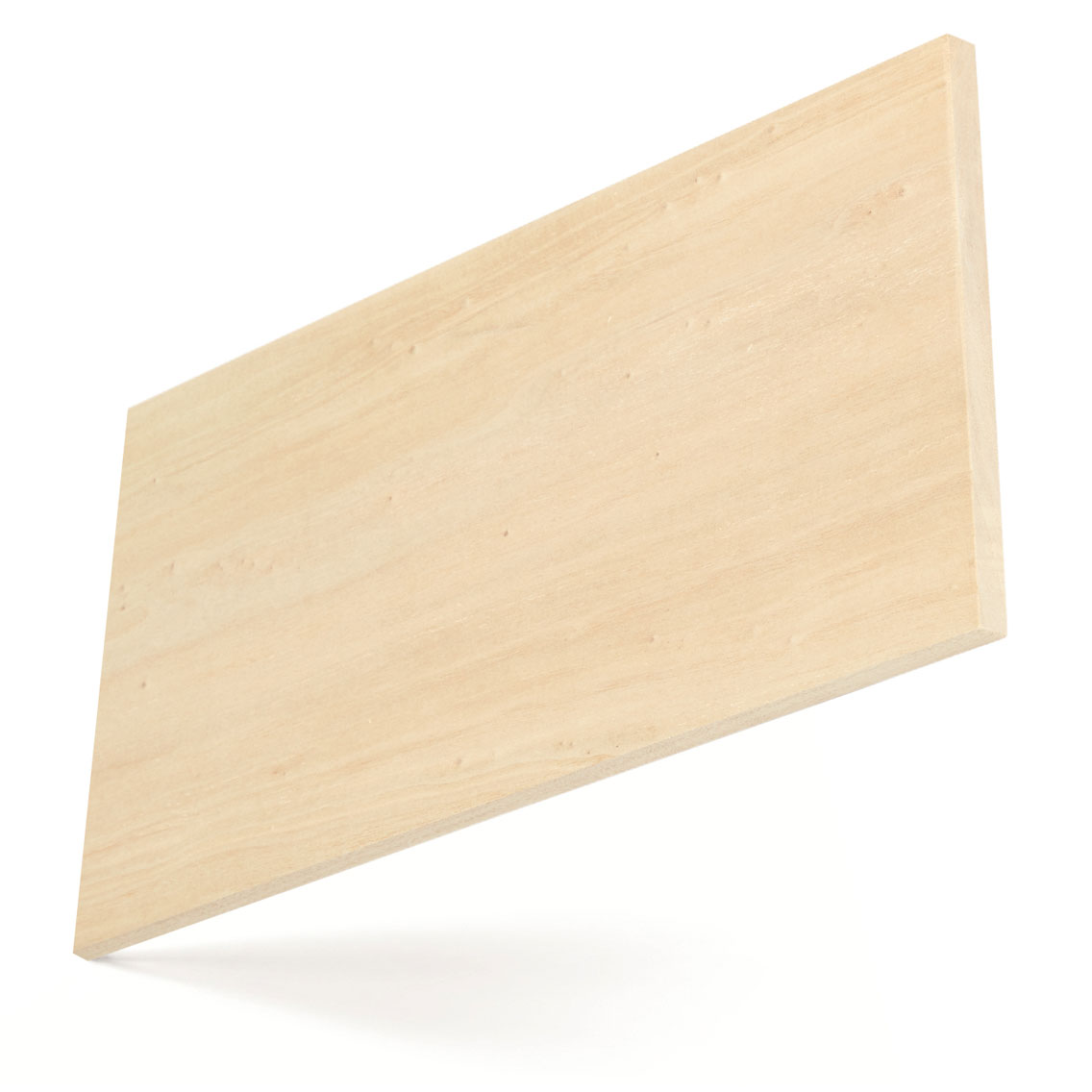American cottonwood
American cottonwood dari bagian timur Amerika merupakan salah satu dari berbagai jenis poplar sejati, seperti aspen, namun dibutuhkan keahlian tersendiri untuk mengolahnya.
Nama Latin
Populus deltoides
Nama Umum Lainnya
eastern cottonwood, eastern poplar

Distribusi Hutan
Pohon American cottonwood dari bagian timur Amerika tumbuh dengan cepat, dan pohon terbesar dari genus ini tumbuh secara merata di seluruh A.S., dan biasanya diasosiasikan dengan air. Diameternya bisa mencapai hingga 8 kaki. Cottonwood bisa disebut sebagai poplar putih dan jangan tertukar dengan tulipwood, yang dikenal sebagai poplar kuning di A.S.
PERTUMBUHAN HUTAN
Data FIA menunjukkan bahwa persediaan American cottonwood berada di angka 236 juta m3, 1,5% dari jumlah persediaan hardwood Amerika. Pertumbuhan American cottonwood mencapai 4,3 juta m3 per tahun sedangkan hasil panennya mencapai 1,8 juta m3 per tahun. Volume bersih (setelah pemanenan) meningkat sebesar 2,6 juta m3 setiap tahunnya. Pertumbuhan American cottonwood melebihi hasil panen di semua negara bagian penghasil utama, kecuali Maine (sebagian besar ditanam di daerah perkotaan), Nebraska, dan Texas. Jumlah cottonwood menurun di beberapa daerah semikering di A.S. karena cuaca yang kering, invasi spesies eksotis, dan penggembalaan secara berlebihan.
LCA Tool
seconds
Ketersediaan Bahan
American cottonwood tersedia sebagai kayu gergajian dan venir, namun mungkin hanya tersedia dalam volume spesifikasi ekspor secara terbatas, ditentukan berdasarkan permintaan ekspor saat ini. Kayu cottonwood tersedia dari produsen di daerah selatan dalam ukuran 4/4” (25,4 mm) dan 5/4” (32 mm), di mana kayu ini harus diproses dengan cepat saat baru dipotong (hijau) untuk menghindari noda dan pewarnaan biru.
Deskripsi Kayu
Cottonwood merupakan kayu berpori dengan tekstur kasar. Biasanya memiliki corak lurus dengan cacat yang relatif sedikit. Kayu gubalnya berwarna putih, namun bisa mengandung garis berwarna cokelat. Kayu teras berwarna pucat hingga cokelat muda.
Sifat Mekanis
Kayu cottonwood relatif ringan dan lunak. Kayu lemah terhadap penekukan dan kompresi, serta tidak tahan terhadap guncangan. Cottonwood tidak menghasilkan aroma atau bau saat kering.
-
0.4
Berat Jenis (12% M.C.)
449 kg/m3
Berat Rata-Rata (12% M.C.)
11.30%
Penyusutan Volume Rata-Rata (hijau hingga 6% M.C.)
58.608 MPa
Modulus pecahan
9,466 MPa
Modulus Elastisitas
33.854 MPa
Kekuatan kompresif (sejajar dengan corak)
1,913 N
Tingkat Kekerasan
Penampilan Saat Dilumasi/Tidak Dilumasi


Kinerja
- Terdapat beberapa tantangan yang bisa diatasi saat mengolah kayu dengan mesin. Permukaan kayu bisa terasa kasar atau berserat saat dipotong, jadi sangat penting untuk menggunakan pisau tajam dengan sudut pemotongan yang sesuai untuk menghindari masalah ini. Selain itu, kayu ini bisa mencengkeram lem dan sekrup dengan baik tanpa terbelah. Kayu bisa dikeringkan dengan mudah, namun ada kecenderungan melengkung dengan pergeseran kecil.
- Kayunya tidak tahan terhadap pembusukan.
Kegunaan Utama
Secara tradisional digunakan untuk tirai Venesia, American cottonwood digunakan untuk furnitur, terutama furnitur reproduksi dan bagian furnitur. Kegunaan lain termasuk bengkel tukang kayu internal dan cetakan.